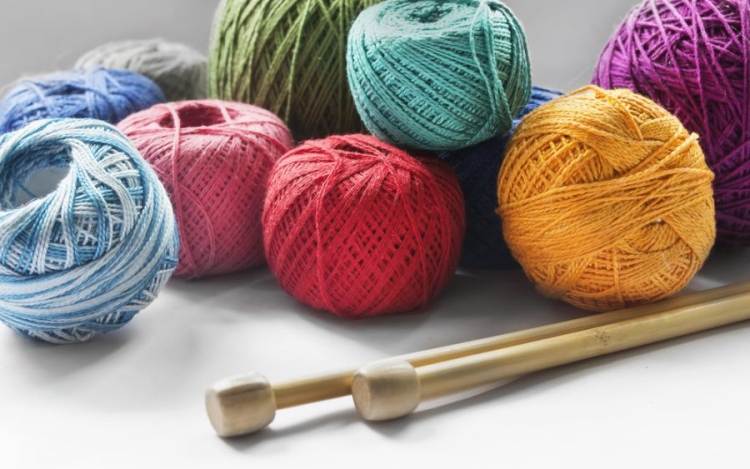When I first started knitting thirty-some years ago, all I remember for yarn options were scratchy wools or scratchy acrylics! Now granted, I was just a wee “babe” at that time and there were probably more options that I wasn’t aware of, but what we have now available to us as knitters/crocheters/weavers is just amazing!! Merinos, cottons, self striping, self patterning, silks, cashmeres, machine washables of all types including some non-scratchy acrylics to name just a few!!
The leader of the pack is wool. Tradition worsted weight wool is considered our “work horse” yarn, the main “go to” for sweaters and blankets. But wool is available in many different weights and it’s wonderful for so many uses. Great stitch definition if you are cabling or working intricate patterns. It’s lighter in feel than comparably gauged cotton (surprising to many) so it can be ideal even for a summer sweater or wrap. It’s possible to find any gauge wool in a machine washable, or superwash, form. This version is equally as warm and lightweight but has an ease of care which is desirable.
Second to the wools would be the world of cotton and plant fibers (linens, bamboo, etc.) Soft, drapey, available in all weights, it is a year round choice. Cotton “nay-sayers” complain that it is hard to get consistent stitch definition and that the yarn is inelastic. Controlling gauge is the goal of all knitters/crocheters, regardless of fiber, but can prove extra challenging when working with cottons. A new trend in yarn manufacturing is “chainnette” yarns, where the yarn is actually a chained contruction. It’s a benefit for a few reasons as it allows for a heavier gauge yarn without the weight (remember cotton is heavier than a comparable wool) and it has some elasticity when being worked. The final project is lighter with a bit more texture due to the chain.
A third option is the much maligned world of synthetics such as acrylic. Just keep in mind, just as not all diamonds are created equal neither are all acrylics. They have come a long way since the scratchy acrylic days of the ‘80s. There is a place for acrylics in our daily knitting. Blended into machine washable wool, it creates a yarn that is soft, easy to care, virtually indestructible and affordable enough to knit up into sweaters for the “littles” and blankets for new graduates off to college (have you seen those dorm washing machines – certainly no gentle cycle!) And then the chenilles …who wouldn’t love to wrap up a newborn in a soft hooded towel made out of the softest, bulky chenille?
It’s just the tip of the iceberg when talking about yarn options. Know the options, understand the feel of the finished work and explore new fibers, see all your options at your local yarn store or an online yarn store. The more experience with different fibers, the easier it will be to substitute yarns and have a finished product to be proud of!




